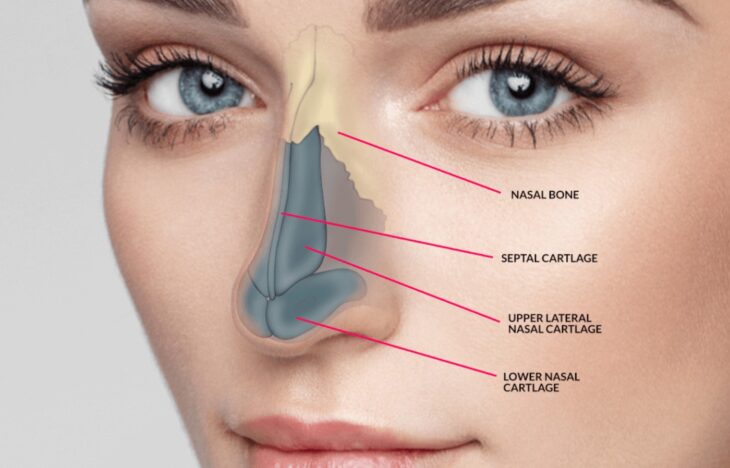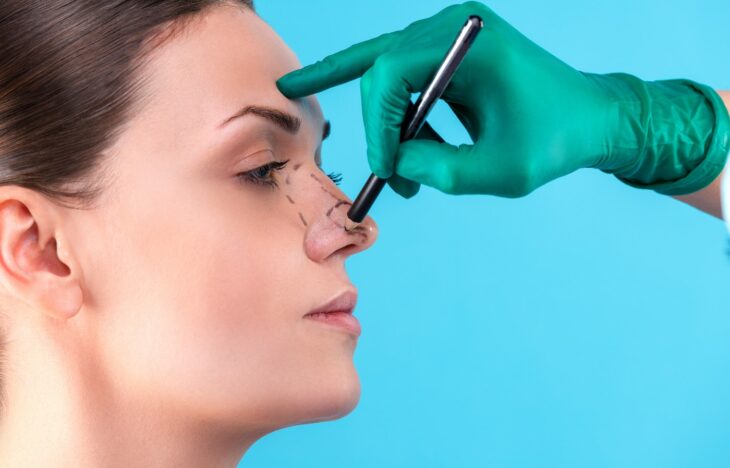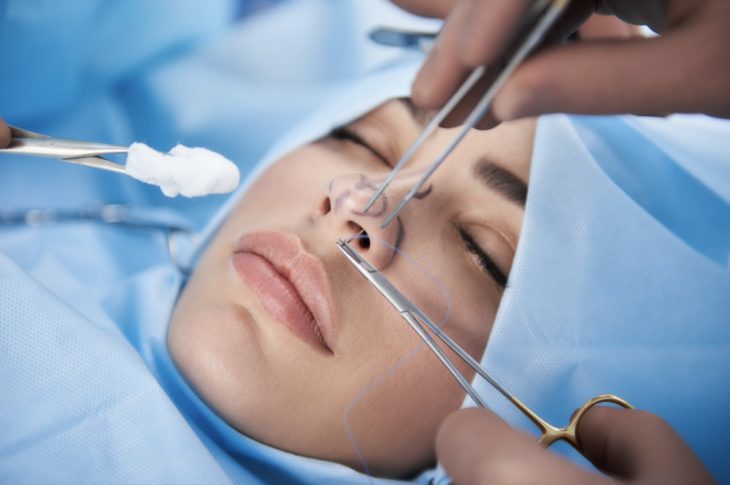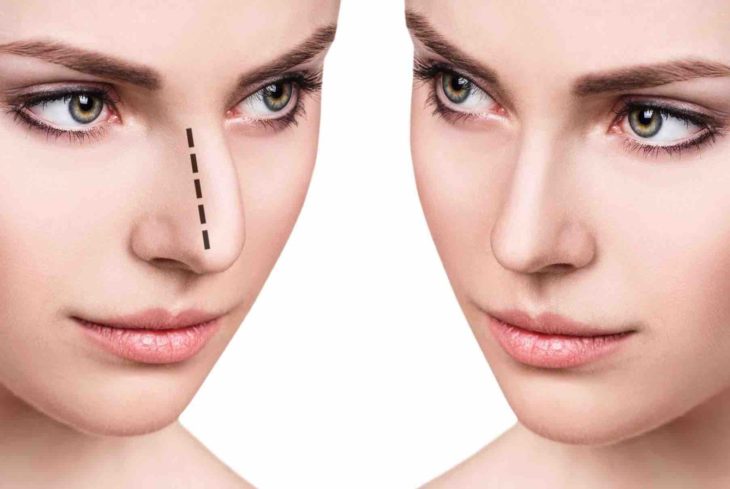Cosmetic surgery is nothing new. For thousands of years man has been trying to beautify himself and change some of the facial and bodily characteristics that nature has given him. The first esthetic operation, as we know it today, was performed in the 19th century. Since then, the techniques have advanced significantly and it is literally possible to change anything we want. Aesthetic surgeries are usually performed to change something we don’t like about ourselves or as part of an anti-aging process. Either way, the goal is to make you feel prettier and have more confidence. Like anything that improves the quality of your life, cosmetic surgery is something that is very important.
One of the most common surgeries performed is rhinoplasty. Many people are dissatisfied with the appearance of their nose and want to change that. But although it is one of the most common, rhinoplasty is also one of the most complex and difficult cosmetic surgeries. That is why it is very important that it is performed by a skilled surgeon. As this is not something to be taken lightly, we will tell you what are the important questions to ask before rhinoplasty. Remember those questions in order to be better prepared and have realistic expectations.

Source: Dr. Geoffrey Tobias
Contents
1. What is rhinoplasty?
First you need to inquire what exactly is rhinoplasty. We all know about nose surgery, but we don’t know exactly what it is or how it is performed. During rhinoplasty, the size, shape and position of the nose change, according to your wishes. It does not have to be a purely cosmetic intervention but can also serve to address nasal deviations that are congenital or caused as a result of the injury. After the intervention, breathing will be significantly improved. As we have said, this is a very complicated intervention and the expertise of the surgeon must be at the highest level for the final result to be what you want.

Source: Brandon Adams Plastic Surgeon Tauranga
2. How is the operation performed?
There are several ways rhinoplasty can be performed, and we will explain the two most common approaches. You should also talk with doctor about that and he will help you choose. The first is to make incisions inside the nostrils to get to the desired part and that method leave no scars but has its shortcomings. Another method, which is much more popular in recent years, is the so-called open method. It is performed by making an incision between the nostrils. The skin separates from the bones and cartilage and then bones and cartilage are reshaped. A small scar may remain on the tissue that separates the nostrils, called a columella, but the scar is almost imperceptible. Excess bone is removed, and if there is less bone and cartilage than needed, then it is transplanted from other parts of the body. Both methods are good and your choice will depend on your nose. First method is for easier cases, while open method is for more complex cases.
Enquire About Risks and Complications
Like any surgery, rhinoplasty too comes with potential risks and complications. Grasping this reality forms a crucial part of the process. Please, have realistic expectations and make informed decisions. Rhinoplasty, when conducted by a skilled surgeon, is generally safe. Yet, the chances of infection, bleeding, adverse reactions to anesthesia, scarring, and asymmetry do exist. A proficient surgeon mitigates these risks by implementing meticulous surgical precautions and fostering open communication. Thus, understanding these risks equips you to embark on this journey with confidence and transparency.
How will my breathing be affected after rhinoplasty?
Rhinoplasty, while primarily focused on aesthetic enhancement, can also influence your nasal breathing. It’s vital to discuss any pre-existing breathing concerns and the potential impact of the surgery on them. Your surgeon’s expertise plays a key role here; they can evaluate your nasal structure and potentially incorporate functional improvements into the procedure. Awareness of these possible alterations helps you to manage your recovery better and sets a realistic framework for the functional outcomes post-surgery.

Source: Beauty Travels 24
3. How to prepare?
The nose makes up a large part of your face and that is why this is a very big procedure. You need to prepare well for the procedure, and this primarily includes living a healthy life for at least a month before the operation. Also, the surgeon will tell you which medications you may and may not use in the days before. He will do all the other necessary examinations of the face and nose. Also ask if it is necessary to take a few days off. Recovery takes at least a week, because then the mask you will wear is removed after 7 days. Ask which pain killers you can use, in what position to sleep, how to breathe and everything else that nose surgery can affect. This website can help you inform even more about post-surgical recovery.

Source: Beverly Wilshire Medical Centre
4. Inquire about price
Your health and appearance are priceless, but you must inquire in advance how much money you need for rhinoplasty. Since it is a complex procedure, it will not be cheap. The price of course varies and you need to make a decision based on other factors than price. This is not something you should try to save on. Surgery is not only included in the price, but also the hospital stay and other analyzes that must be done, as well as the recovery process. You will learn everything in more detail when you go to the first meeting.

Source: Haute Living
5. Ask about specializations
Ask your surgeon to tell you what specializations he has completed to be a specialist in rhinoplasty. Don’t worry that he will find that question to be offensive, it’s something you absolutely need to ask to be safe. After all, your health is at stake, so everything is allowed to you. Ask him also how experienced he is, and you will see this best by how many years he has been doing it and how many such operations he performs annually. There are various accreditation bodies like the American Board of Facial Plastic and Reconstructive Surgery so it would be good to be a member of some of them. It is very important to choose someone for whom this is the primary thing and he does it almost every day.

Source: Pinterest
Are There Limitations in Aesthetic Outcome?
Rhinoplasty is as much an art as it is a science. Each nose is unique and presents its own set of possibilities and limitations. Therefore, having a grounded understanding of the achievable aesthetic results is crucial. Through an in-depth consultation, your surgeon can explain the extent of alterations possible, considering the structural constraints of your nose and the need for balance with your overall facial features. This conversation helps align your aesthetic aspirations with the practical possibilities, ensuring you’re pleased with your transformation.
6. Find out about revision
No matter how good the surgeon is and how well you prepare for the operation, there is a chance that it will not be 100 percent successful. The nose is very complex and it happens that you need a revision. Once you are conceived, you will go for regular check-ups and if you conclude that not everything is as you wanted, you will be subject to an audit. It will be a significantly smaller procedure than the first, but it is important that you know a few things about it. Ask him first what his revision rate is, because that speaks to the quality of his work. Make sure the revision rate is in line with other successful surgeons. Then ask how long you have to wait for the audit, and also find out how much you will have to pay. Everyone charges differently for audits, and for some they are even free or very cheap. It usually depends on whether you want something extra or he thinks his initial work could be improved.
Conclusion:
These are the questions you need to ask at the first meeting, so that you can properly prepare for this complex procedure. Don’t worry, rhinoplasty is constantly improving and 99% of patients are very satisfied with the outcome.
